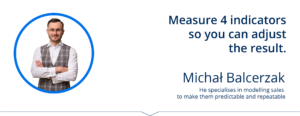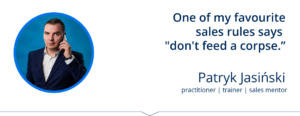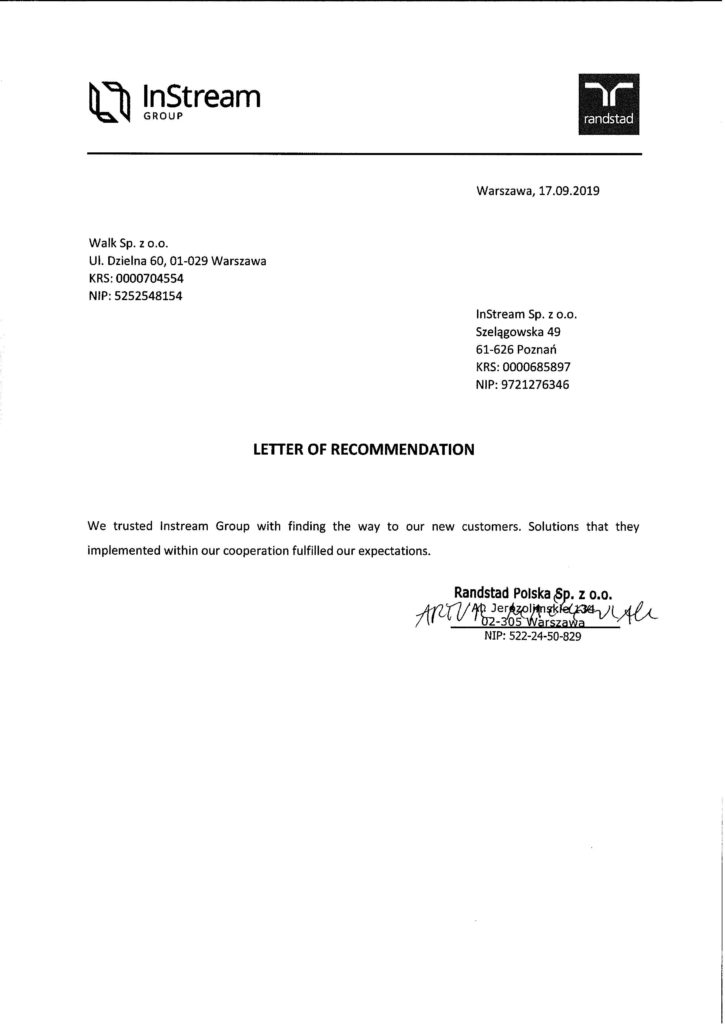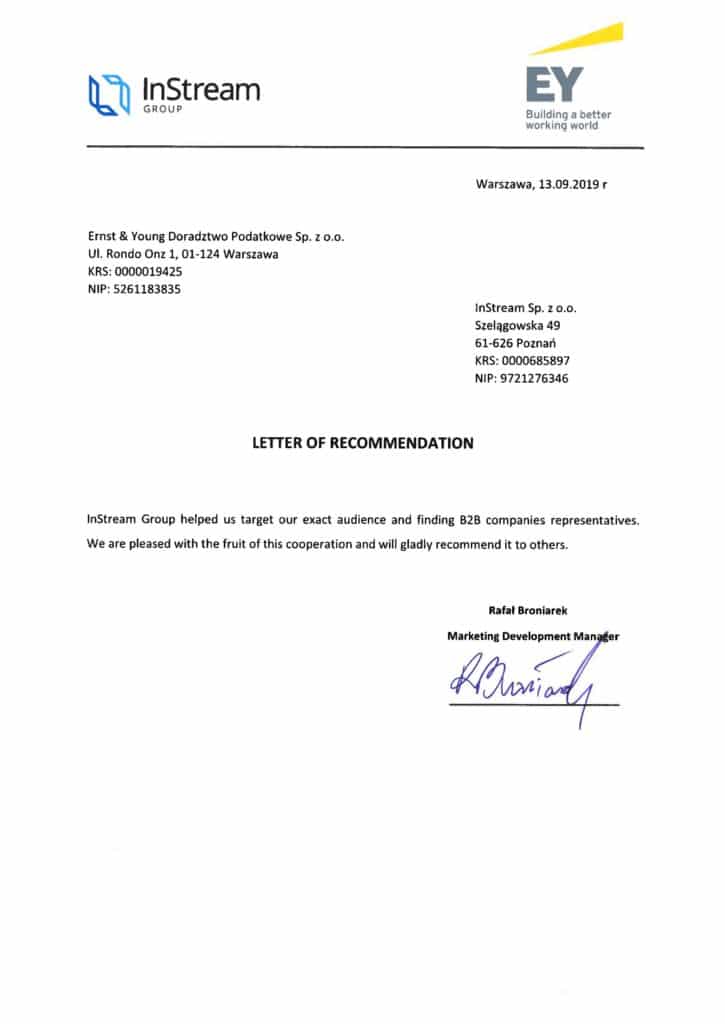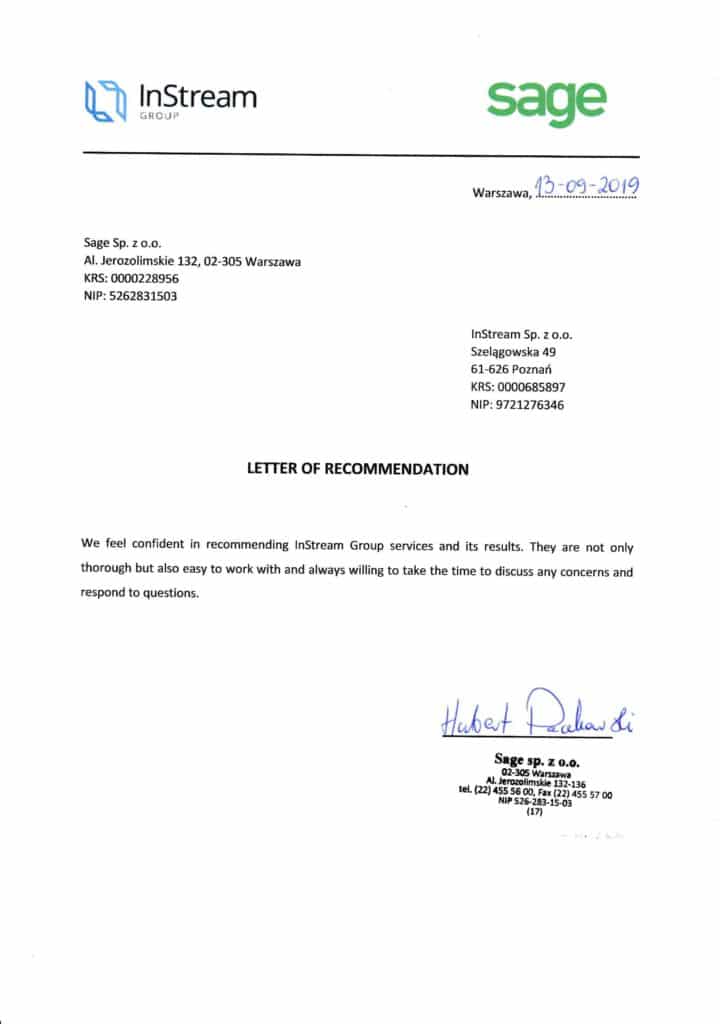Building sales is a process that we constantly work on – researching, testing, evaluating, all to achieve ever more satisfying results.
From the article “How to Design a Sales Process”, you are already well aware of what a sales funnel is. How to build it, manage it and measure the effects of salespeople’s work. But what should you follow in the next steps?
Industry experts who live and breathe sales and know it inside out can help you answer this question. Thanks to their kindness and cooperation, we present 6 HOT TIPS for effective sales funnel management.
Table of Contents
- Bartosz Majewski: Questions to Help Develop the Sales Process
- Michał Balcerzak: 2 Conditions to be Met to Improve Sales Performance
- Szymon Lach: Lack of Statistics Control in CRM
- Tomasz Kalko: Exclusivity in Sales
- Patryk Jasiński: Is It Still a Customer in the Funnel or Already a Corpse?
- Filip Duszczak: Why a Sales Process in a Team?
![]()
CEO Casbeg. Some time after the value of the transactions he completed exceeded PLN 20 million – he became a manager and turned his attention to other metrics. The teams he leads have acquired more than 1,000 clients in 41 markets. During his 12 years in sales he worked for RightHello, Divante, Unity, Hipotekaplus.pl, among others. As a consultant he worked with some of the fastest growing startups and companies in Poland, including Callpage, Droids on Roids, Monterail, Pixers, Sotrender, Yieldbird, Telemedi.co, Neoteric.
More at: www.casbeg.com
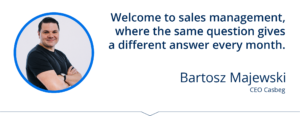
Questions to Help Develop the Sales Process
I’m sorry to inform you: there is no single key practice in sales funnel management. If even one thing doesn’t play – it’s because of this one thing that everything we’ve done actually takes a hit. It’s like with an orchestra – if even one instrument is out of tune – it will ruin our concert experience, just like Hannibal Lecter in “The Red Dragon”.
Therefore, the most important aspect of sales management is to keep asking the question: “What is my biggest problem?” alternating with “Where is our bottleneck?”

If it turns out that marketing is generating massive amounts of leads and sales is struggling to process them, then our problem lies in the quality and speed of customer service. Let’s say, optimistically, that as a result of answering the above questions correctly, we hire and train two additional people for the customer service department and improve their processes slightly. What will happen then?
The bottleneck will shift to another part of the customer path.
It will turn out that we have free customer service capacities, but not enough leads or not enough salespeople. And again we will have to face the same question. Welcome to sales management, where the same question gives a different answer every month.
![]()
He built and made independent a million dollar sales team with no startup budget. Currently the co-owner of Lokalmedia, PDF Financial Mentoring and author of Salesmaker project. He specialises in sales modelling, in other words, he steps into the role of a partner whose job is to build sales in a way that makes them predictable and repeatable. Everything he talks about on the subject of sales and management he has worked through first-hand.
More at: www.michalbalcerzak.pl
2 Conditions to be Met to Improve Sales Performance
The sales funnel management objective should be to get to the point where the excuse “this month is usually weaker” becomes just a legend.
For this to happen, 2 conditions must be met:
Condition 1: Your sales and marketing process should mirror the customer’s buying process.
a) Look at how the customer buys products/services:
Stage 1: The customer does not know they have a problem/challenge.
Stage 2: The customer looks for knowledge on how to solve a problem / deal with a specific challenge.
Stage 3: The customer looks for a supplier (who they can buy the solution from).
Stage 4: The customer buys (compares offers and either decides on something or opts out).
b) Match each stage of the buying process with specific actions so that the customer can go through the entire buying process with you.
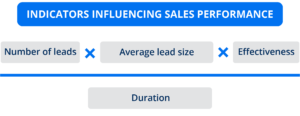
Condition 2: Measure 4 indicators so you can adjust the result:
a) Number of leads,
b) Average lead size,
c) Effectiveness,
d) Duration.
If you do the equation: “(a * b * c) / d” then you can predict your turnover or you know which indicators to work on (there are 4).
Above all, an active salesman on a daily basis. Since 2011 also a sales trainer and the owner of an agency recruiting salespeople only. He helps companies improve their communication processes with customers. Passionate about semantics and playing with words in sales. He has worked and continues to work for companies such as Mercedes-Benz Garcarek, Słuchmed, Wilo, mFinanse and many others.
More at: www.szymonlach.com and www.salesleaders.pl
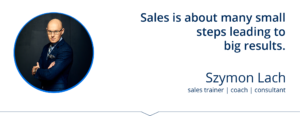
Lack of Statistics Control in CRM
Which tab in the CRM system or funnel do most salespeople look at the least? To statistics.
The salespeople I work with often don’t even know that such a tab exists. And it is there that information and answers are hidden, telling what a salesperson should do, improve, raise, in order to ultimately achieve a result.
Often salespeople are like children in a fog – wandering around, looking for answers to the question of what to do to improve the result. The answers often lie in the analysis of statistics and data. This is where you can see the weakest and strongest areas of the process, and therefore the places which are worth changing, developing and maintaining in your sales process.
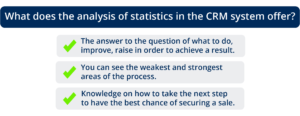
Sales is about many small steps that lead to big results. Statistics analysis helps to find answers related to taking the next step in such a way as to have the best chances of success and sales. Statistics in the funnel is something every good salesperson should look into as often as possible, measuring the effects of their work so far and planning their next actions.
Trainer, coach, motivational speaker and manager with 20 years of experience. (He has trained over 30 000 people). Lecturer at the School of Business Coaches at Kozminski University in Warsaw. Member of the Professional Speakers Association. Development Director, Regional Director and internal trainer at BLACHY PRUSZYŃSKI.
I specialise in: work with managers, improving communication, building teamwork, effective sales, counteracting professional burnout of sellers and managers, self-presentation.
More at: www.tomaszkalko.pl
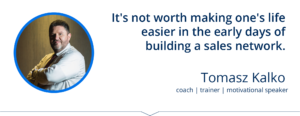
Exclusivity in Sales
If your business distributes products or services that require building a redistribution network, you’ve certainly encountered the expectation of exclusivity for a certain product or market.
Exclusivity is a very specific tool, which greatly facilitates negotiations. There are markets, industries, businesses where exclusivity is a standard solution.
However, if you do not have to grant exclusivity, do not make this mistake. Don’t make life easy for yourself with this solution, because exclusivity has a lot of disadvantages that become apparent later in the cooperation.
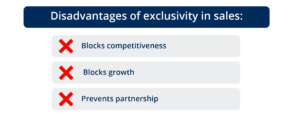
What are the long-term disadvantages of exclusivity:
– It blocks competition. If your client negotiated exclusivity, they will exploit this in your relationship. They will impose conditions that will undermine your market position, your profitability, your ability to grow.
– It blocks growth. When starting to build your network, you want to sell. To start a business. But exclusivity will very quickly drive your business to the wall.
– It prevents partnership on equal terms. If your customer does not meet the terms of the cooperation, introducing a new distributor will be very difficult. By wanting to do so, you will be accused of fraud and lack of fairness. And if exclusivity is what you promised, then the customer is right.
This is why it is not worth making life easy for yourself at the start of building your sales network.
If you have no choice but to give exclusivity:
– Grant it for a specific, not too long time.
– Clearly define the level of turnover below which you will be allowed to introduce another company into your local market.
– Offer clear and attractive sales support packages so that the client wants to work with you, which can serve as a substitute for exclusivity.
Practitioner/ Trainer/ Mentor of salespeople
He has been actively involved in sales for 11 years. In his career as both a salesman and a sales manager, he has repeatedly broken sales records. His main specialisation is telephone sales, customer service and negotiations.
Privately, a deserved honorary blood donor and the biggest fan of his dog.
Patryk shares his knowledge about successful sales and professional customer service, on social media and on his website.
More at www.patrykjasinski.pl
Is It Still a Customer in the Funnel or Already a Corpse?
In sales, we can repeatedly encounter the so-called clogged funnel syndrome. In most cases, unfortunately, this is just the salespeople’s wishful thinking, while the truth is that most of these topics have already died a natural death.
One of my favourite sales rules, of which I have more than 30, is “don’t feed a corpse”. Feeding a corpse is nothing else than feeding customers in our sales funnel, who, as I mentioned, have already died a natural death and simply do not want to take advantage of our offer, most often explaining it with: lack of time, lack of management, budget or worse, not answering the phone once again.
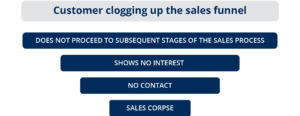
What can be done to avoid feeding a corpse?
- Measure the average time a customer spends in a given stage.
- Ensure proper customer retention – frequently the bottom of the funnel gets clogged up with low value customers who are simply a waste of time.
- Determine the number of attempts to contact a given customer. Another of my sales rules is the 3 × 48 rule. For each customer, I carry out max. 3 active actions with a 48-hour break between each of them (unless we are talking about very high volume sales, in which case this rule may be slightly modified). This principle is so ironclad for me that it requires a detailed explanation and could be the subject of a separate entry.
- Make it a 0/1 case with the customer. This is where I recommend that when a customer has been in our funnel for too long we make a contact that makes things clear. I am a firm believer in the principle that it is better to hear a sincere no than an insincere maybe. This approach helps me to avoid wasting too much time on customers who are not prospective anyway.
- Just get the corpses out of the funnel – it doesn’t hurt, and you’ll see that it gives you time to attract new clients who may be interested in your proposition.
While I know that for many salespeople throwing topics out of the funnel is black magic, I highly recommend this approach. Approach it like dating. Do you want to organise endless outings, for a partner who isn’t interested in you anyway, and is just doing it to kill free time?
Founder of InStream Group, owner of InStream CRM and PipeChamp, experienced sales trainer. For years, he has been advising companies on building and improving sales processes. He is passionate about the use of technology in communication and sales processes..
Contact number +48 734 412 836
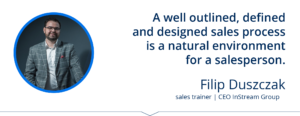
Take advantage of the fact that you are playing at home today!
Have you ever wondered why a team actually needs a sales process? Considering that we look for innate talent, inbuilt empathy and flexibility in salespeople, so why do we impose a process and schemes?
Why doesn’t a basketball team train on different courts? Why do basketball players, football players, hockey players and other athletes carry out the same schemes, strategies and actions on their own court day in and day out, making it so that when they play at home they usually gain the advantage?
Well, in sales, it is the very well outlined, defined, designed sales process that is the natural environment of a salesman.
It’s not just the mapped out funnel of 4 stages based on which our team is expected to sell. The sales process should consist of a very extensive range of elements that make the salesperson know exactly what to do, depending on the given sales situation.
The sales process should include activities, communications, rules and regulations, tools, methods, procedures, knowledge, the sales environment and much more.

A salesperson, like a player who plays at home, must feel confident in his/her role in any situation. And by being at home ( knowing the process) he/she feels an extra advantage. A salesperson has to know the best solutions, behavioural strategies and be confident, as there is nothing new about any situation. This is his/her dance floor.
A good Sales Manager is one who can build the very environment, process, team, discipline that makes the team feel like they are playing at home.

